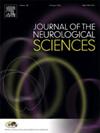Exposure to sertraline and ranolazine is common among adult patients with genetically uncharacterized lipid storage myopathy
IF 3.6
3区 医学
Q1 CLINICAL NEUROLOGY
引用次数: 0
Abstract
Background
To investigate sertraline and ranolazine exposure in adult patients with lipid storage myopathy (LSM), given recent reports of their potential association with the condition.
Methods
We reviewed electronic health records to identify adult patients with a pathological and/or genetic diagnosis of LSM, who were evaluated at the Mayo Clinic (January 2000–December 2021). Patients without genetic testing were excluded.
Results
We identified 10 patients with LSM, including 8 with multiple acyl-CoA dehydrogenase deficiency (MADD) and 2 with subacute LSM after ranolazine initiation. Genetic testing revealed an underlying molecular defect in only 3 MADD patients. Sertraline exposure was noted in 4 MADD patients, none of whom had an identified genetic defect. Muscle biopsy findings were similar across patients with hereditary MADD, sertraline-associated MADD, and ranolazine-associated LSM, all demonstrating excessive lipid accumulation and attenuation of succinate dehydrogenase reactivity. MADD patients showed a favorable response to riboflavin and coenzyme Q10 supplementation, regardless of genetic test results. Patients with ranolazine-associated LSM improved following discontinuation of the drug.
Conclusions
LSM is rare in adults but important to recognize due to its treatability and potential drug-induced cases in a significant proportion of patients. Weakness in individuals taking sertraline or ranolazine should prompt consideration of LSM.
暴露于舍曲林和雷诺嗪是常见的成人患者的遗传非特征性脂质储存肌病
背景:考虑到最近报道的舍曲林和雷诺嗪暴露与脂质储存性肌病(LSM)的潜在关联,研究成年患者的舍曲林和雷诺嗪暴露。方法:我们回顾了2000年1月至2021年12月在梅奥诊所评估的经病理和/或遗传诊断为LSM的成年患者的电子健康记录。未进行基因检测的患者被排除在外。结果10例LSM患者,其中8例为多发性酰基辅酶a脱氢酶缺乏症(MADD), 2例为利诺嗪起始治疗后亚急性LSM。基因检测显示,只有3名MADD患者存在潜在的分子缺陷。在4名MADD患者中发现舍曲林暴露,他们都没有确定的遗传缺陷。遗传性MADD、舍曲林相关MADD和雷诺嗪相关LSM患者的肌肉活检结果相似,均表现出过度的脂质积累和琥珀酸脱氢酶反应性减弱。无论基因检测结果如何,MADD患者对核黄素和辅酶Q10的补充均表现出良好的反应。雷诺嗪相关性LSM患者在停药后得到改善。结论slsm在成人中罕见,但由于其可治疗性和很大比例的患者可能存在药物引起的病例,因此认识slsm很重要。服用舍曲林或雷诺嗪的人身体虚弱,应考虑LSM。
本文章由计算机程序翻译,如有差异,请以英文原文为准。
求助全文
约1分钟内获得全文
求助全文
来源期刊

Journal of the Neurological Sciences
医学-临床神经学
CiteScore
7.60
自引率
2.30%
发文量
313
审稿时长
22 days
期刊介绍:
The Journal of the Neurological Sciences provides a medium for the prompt publication of original articles in neurology and neuroscience from around the world. JNS places special emphasis on articles that: 1) provide guidance to clinicians around the world (Best Practices, Global Neurology); 2) report cutting-edge science related to neurology (Basic and Translational Sciences); 3) educate readers about relevant and practical clinical outcomes in neurology (Outcomes Research); and 4) summarize or editorialize the current state of the literature (Reviews, Commentaries, and Editorials).
JNS accepts most types of manuscripts for consideration including original research papers, short communications, reviews, book reviews, letters to the Editor, opinions and editorials. Topics considered will be from neurology-related fields that are of interest to practicing physicians around the world. Examples include neuromuscular diseases, demyelination, atrophies, dementia, neoplasms, infections, epilepsies, disturbances of consciousness, stroke and cerebral circulation, growth and development, plasticity and intermediary metabolism.
 求助内容:
求助内容: 应助结果提醒方式:
应助结果提醒方式:


